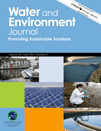
WATER AND ENVIRONMENT JOURNAL
Scope & Guideline
Shaping sustainable practices through rigorous research.
Introduction
Aims and Scopes
- Water Quality Assessment:
Research on techniques and methodologies for assessing the quality of water bodies, including the detection of contaminants, pollutants, and pathogens. - Wastewater Treatment Technologies:
Innovations and advancements in technologies for treating wastewater, including biological, chemical, and physical processes aimed at improving effluent quality. - Water Resource Management:
Studies focusing on sustainable management practices for water resources, including allocation, conservation, and policies that support efficient use of water. - Impact of Climate Change:
Research examining how climate change affects water systems, including hydrological cycles, water availability, and the implications for water management. - Public Perception and Policy:
Exploration of public attitudes towards water use, conservation behaviors, and the effectiveness of policies aimed at improving water sustainability. - Microbial and Ecological Studies:
Investigations into the roles of microorganisms in water treatment processes and their ecological implications in aquatic environments. - Emerging Contaminants:
Research on the occurrence, fate, and treatment of emerging contaminants, such as pharmaceuticals and personal care products, in water systems.
Trending and Emerging
- Integration of Machine Learning in Water Management:
There is a significant trend towards employing machine learning techniques for modeling and optimizing water treatment processes, demonstrating the importance of data-driven approaches in the field. - Nature-Based Solutions (NbS):
Research focusing on nature-based solutions for water treatment and management is on the rise, highlighting the effectiveness of using ecological processes to address water challenges. - Public Engagement and Behavior Change:
Increasing attention is being paid to understanding public perceptions and behaviors related to water use and conservation, indicating a shift towards more community-based approaches. - Microalgae Utilization in Wastewater Treatment:
The utilization of microalgae in wastewater treatment processes is gaining traction, reflecting a growing interest in sustainable and resource-efficient methods. - Impact of Microplastics and Emerging Contaminants:
There is an increasing focus on the assessment and treatment of microplastics and other emerging contaminants in water bodies, indicating a shift towards addressing contemporary pollution challenges. - Climate Resilience in Water Systems:
Research aimed at enhancing the resilience of water systems to climate change impacts is emerging as a critical area of focus, reflecting the urgency of adapting to climate variability.
Declining or Waning
- Traditional Water Treatment Methods:
Research on conventional treatment methods for water purification appears to be declining as newer technologies and integrated approaches gain prominence. - Non-Technical Aspects of Water Management:
Studies focusing solely on non-technical aspects, such as community engagement without integration with technical solutions, are becoming less frequent. - Local Case Studies:
The journal has seen a decrease in the publication of localized case studies, possibly in favor of broader, more generalizable research findings that have wider applicability.
Similar Journals

Hydrologie und Wasserbewirtschaftung
Innovating hydrology for a thriving planet.Hydrologie und Wasserbewirtschaftung, published by the BUNDESANSTALT GEWASSERKUNDE-BFG, stands as a vital open access journal in the field of hydrology and water management since its inception in 1999. Based in Germany, this journal aims to disseminate high-quality research related to water resources, environmental sustainability, and innovative management strategies. Though it has a Q4 ranking in Water Science and Technology for 2023, and holds a Scopus rank of 113 out of 225, the journal provides an essential platform for researchers, professionals, and students interested in advancing their understanding of water science. With coverage spanning from 1999 to 2018 and a seamless move to an open access model, Hydrologie und Wasserbewirtschaftung remains committed to contributing to the ongoing dialogue around critical water issues. Researchers looking to publish their findings or stay abreast of developments in water science will find this journal indispensable.
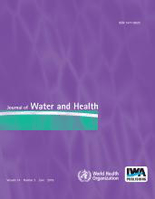
JOURNAL OF WATER AND HEALTH
Advancing global health through innovative water research.The JOURNAL OF WATER AND HEALTH, published by IWA PUBLISHING, serves as a leading platform for disseminating innovative research related to water quality, sanitation, and public health. With its ISSN 1477-8920 and E-ISSN 1996-7829, this esteemed journal significantly contributes to the fields of Public Health, Environmental Science, and Microbiology, as evidenced by its robust rankings in several quartiles, including Q2 in Public Health and Water Science and Technology in 2023. This periodical enjoys a convergence of years from 2003 to 2024, underscoring its continuous relevance in addressing critical global issues such as water safety and infectious diseases. Although not an open-access journal, the insights and findings presented are pivotal for researchers, professionals, and students eager to contribute to the sustainable management of water resources and health improvements worldwide.

Environmental Science-Advances
Exploring the frontiers of environmental science.Environmental Science-Advances, published by the esteemed Royal Society of Chemistry, is a pioneering open-access journal dedicated to advancing the field of environmental sciences. Having commenced publication in 2022, this journal serves as a vital platform for the rapid dissemination of high-quality research covering a broad scope, including environmental chemistry, pollution management, water science and technology, and environmental engineering. With its commitment to open access, it ensures that vital environmental research is freely available to researchers, professionals, and students worldwide, thus fostering collaboration and innovation in addressing pressing environmental challenges. Currently, the journal is ranked in the Q2 and Q3 quartiles across various categories such as Environmental Engineering and Water Science, indicating its growing influence within the academic community. With the global imperative for sustainable environmental solutions, Environmental Science-Advances is positioned to become an invaluable resource for those dedicated to the study and solution of environmental issues.
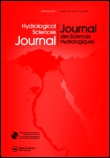
Hydrological Sciences Journal
Bridging research and practice in hydrological sciences.Hydrological Sciences Journal, published by Taylor & Francis Ltd, is a leading peer-reviewed publication dedicated to advancing the field of hydrology, spanning topics from water management to climate impacts on hydrological systems. With an impressive impact factor and a noted Q1 category ranking in Water Science and Technology, the journal occupies a pivotal role in the academic landscape, facilitating high-quality research dissemination since its inception in 1982. The journal is indexed in Scopus, holding a commendable rank of #48 out of 261 in the Environmental Science category, placing it in the 81st percentile among its peers. Although it does not offer Open Access options, the journal ensures extensive reach and readership through institutional subscriptions. As it converges toward its milestone of 2024, the Hydrological Sciences Journal remains an indispensable resource for researchers, professionals, and students eager to explore the latest advancements and methodologies in hydrological research.

Water Resources
Navigating the challenges of water resource sustainability.Water Resources, a prominent journal published by MAIK NAUKA/INTERPERIODICA/SPRINGER, focuses on the critical and evolving field of water science and technology. Established in 1976 and with a long-standing commitment to advancing knowledge, this journal explores interdisciplinary research that addresses the challenges surrounding water resource management, quality, and sustainability. With an impact factor positioned within the Q3 category of its field, it holds a notable Scopus rank (#181/261) in Environmental Science, emphasizing its role in driving scholarly discourse. While currently not open access, Water Resources provides vital insights for researchers, professionals, and students, making it an essential resource for those seeking to innovate and implement effective water management solutions. To stay ahead in a domain that is increasingly paramount to global sustainability efforts, consider engaging with the latest research published in this vital journal.
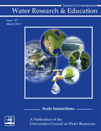
Journal of Contemporary Water Research & Education
Innovating Research to Tackle Water ChallengesJournal of Contemporary Water Research & Education is a leading publication in the field of water resources, committed to advancing the understanding and management of water-related issues through innovative research and education. Published by WILEY, this journal serves as a vital platform for researchers and practitioners to disseminate knowledge on contemporary water challenges, management strategies, and environmental policies. With an ISSN of 1936-7031 and an E-ISSN of 1936-704X, it provides a wealth of peer-reviewed articles that are essential for anyone interested in sustainable water resource practices. Although it does not currently operate under an open-access model, the journal's comprehensive content remains accessible through various institutional and personal subscriptions. As we face increasing water scarcity and quality issues globally, the Journal of Contemporary Water Research & Education strives to foster collaboration and innovation, playing a pivotal role in equipping scholars, professionals, and students with the knowledge necessary to tackle these pressing challenges.
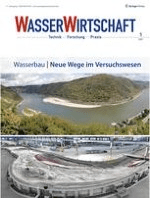
WasserWirtschaft
Fostering knowledge in the realm of water science.WasserWirtschaft is a renowned academic journal dedicated to the critical field of water science and technology. Published by SPRINGER VIEWEG-SPRINGER FACHMEDIEN WIESBADEN GMBH, this journal has been a vital resource for researchers, professionals, and students since its inception in 1973, covering an extensive range of topics pertinent to water management, engineering, and environmental sustainability. Although it is currently ranked in the Q4 category of the Water Science and Technology category as per the 2023 Scopus metrics, with a ranking of #246 out of 261, the journal is committed to enhancing the discourse surrounding water resource management through high-quality, peer-reviewed articles. The journal does not operate on an Open Access basis, ensuring that its content is curated and accessible to subscribers while promoting rigorous academic standards. With its historical significance and focus on contemporary water-related challenges, WasserWirtschaft remains an essential publication for stakeholders aiming to advance the science and technology of water resources in a rapidly changing world.

Tecnologia y Ciencias del Agua
Championing open access to vital water research.Tecnologia y Ciencias del Agua is a dynamic and innovative open access journal published by the Instituto Mexicano de Tecnología del Agua, dedicated to advancing knowledge in the fields of civil and structural engineering as well as water science and technology. Since its inception in 1930, the journal has provided a platform for interdisciplinary research and discussion, catering to an audience of researchers, professionals, and students interested in the management of water resources and sustainable engineering practices. With an ISSN of 0187-8336, and an E-ISSN of 2007-2422, this journal has converged its focus from 2010 through 2024, although it currently holds Q4 quartiles in its category as per the 2023 rankings, indicating its evolving role within the global landscape of academic publishing. Despite its emerging status, the journal's commitment to disseminating high-quality, peer-reviewed research on critical topics related to water management and engineering continues to enhance its relevance and appeal. The journal is based in Morelos, Mexico, contributing to the region's rich academic tradition while also engaging with a broader international audience through its extensive open access policy.
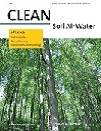
CLEAN-Soil Air Water
Transforming Research into Action for a Healthier PlanetCLEAN-Soil Air Water, an esteemed journal published by Wiley, serves as a vital platform for disseminating research in the fields of environmental chemistry, pollution, and water science and technology. Operating under an Open Access model, it embraces the principles of knowledge sharing, making significant research findings readily accessible to a global audience. With an ISSN of 1863-0650 and an E-ISSN of 1863-0669, the journal has demonstrated its importance in the academic community, reflected in its Scopus rankings within the top quartiles of its categories. Established in 2007 and continuing through to 2024, CLEAN-Soil Air Water offers researchers, professionals, and students an opportunity to explore innovative studies that address pressing environmental challenges, facilitating an exchange of novel ideas and techniques essential for sustainable development. With a publication footprint in Germany and a growing international reputation, this journal is an invaluable resource for those dedicated to advancing the science and practices of environmental stewardship.

WATER RESOURCES MANAGEMENT
Innovating Approaches to Sustainable Water ManagementWATER RESOURCES MANAGEMENT is a prestigious journal published by SPRINGER, renowned for its contribution to the fields of Civil and Structural Engineering as well as Water Science and Technology. Operating since 1987, this journal has established itself as a vital resource for researchers, professionals, and students alike, boasting a remarkable impact factor and a Q1 designation in both relevant categories as of 2023. The journal is indexed in Scopus, achieving commendable ranks—34th in Environmental Science and 62nd in Civil and Structural Engineering, placing it in the top percentiles of its fields. Although it does not offer open access, WATER RESOURCES MANAGEMENT serves as a comprehensive platform for disseminating innovative research, discussions, and case studies that address the global challenges of water resource management. With a commitment to fostering knowledge and advancing the understanding of integrated water management solutions, this journal is indispensable for anyone engaged in these critical scientific domains.